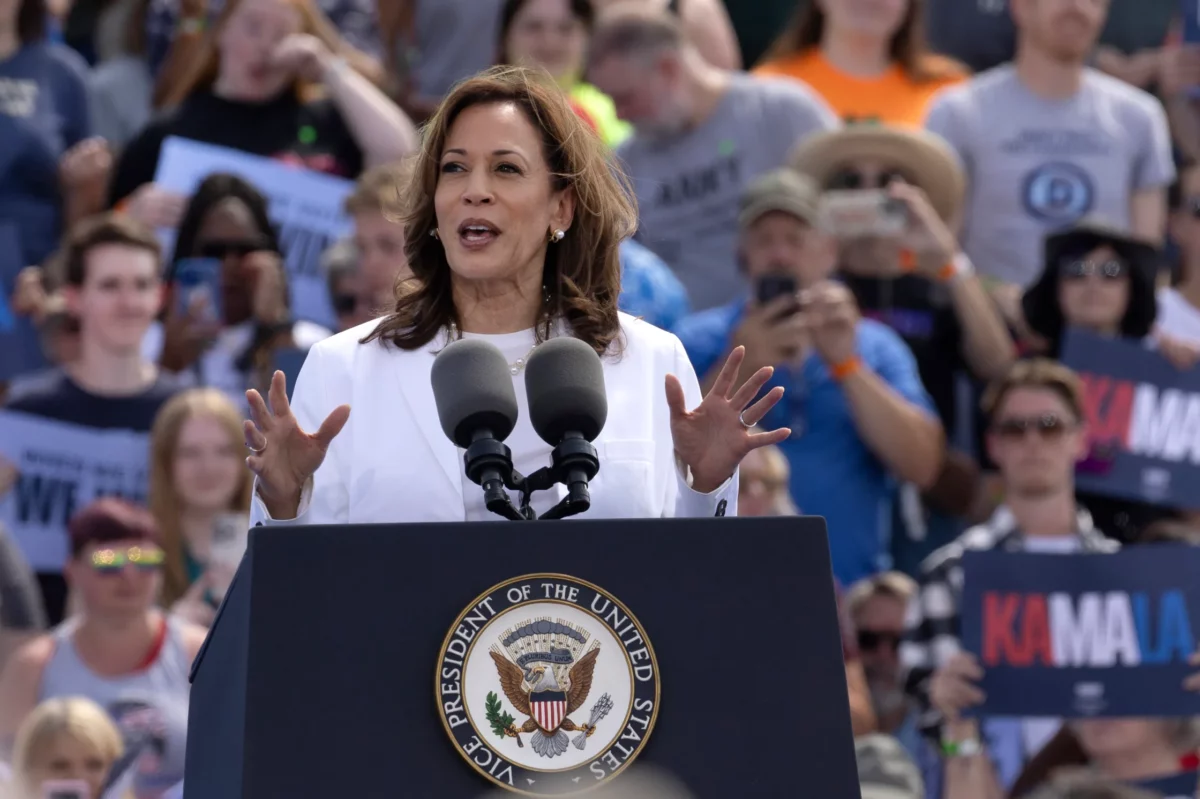The New York Times reported today that Kamala Harris had pulled ahead of Donal Trump in the three potentially decisive swing states of Michigan, Pennsylvania and Wisconsin. Also today, The Economist, which in mid-July gave Trump a three-in-four shot of winning the 2024 presidential election, reported that Harris had inched ahead in its comprehensive poll tracker.
The headlines capped a remarkable three weeks of US political news since President Joe Biden dropped out of the race. Harris has bathed in almost unanimously warm-to-fawning mainstream media coverage ever since and done so without direct outreach to the press. It’s been the type of earned or “in-kind” media treatment that Trump received in 2016 and, funny enough, has often revolved around talk of crowd sizes and voter enchantment.
The similarities end there. Harris has not earned this coverage through provocation or bluster. And her ascension to the top of the Democratic ticket is a historic anomaly unlike Trump’s rise.
Still, the current tone of election coverage is surprising. It’s anyone’s guess as to how long it will last. And the Harris campaign should be gearing up for a much tougher news cycle.
History prior to July 21 offered no indication of the media’s rapturous reception of Harris. Her shambolic 2020 campaign prompted daily skewering. Much reporting on her early tenure as VP centered on managerial shortcomings and alarming staff turnover. Pundits on the right, and more than a few on the left, seized on her 2021 interview with Lester Holt as an admission of incompetence when she said she had not visited the southern border, but hadn’t traveled to Europe, either.
Harris and her team aimed to turn things around in early 2022 with a full court press on the press, as Max Tani reported in Semafor. Establishment journalists, liberal Substack stars and social media influencers dined with the VP at the Naval Observatory. Harris offered more interviews, in contrast to her boss’ tendency even midway through his first term to be shielded from the media.
That outreach is paying huge dividends now, but the payoff was over two years in coming. One only has to look back to the tortuous window between Biden’s disastrous debate and decision to bow out to recall consternation that Harris might become the nominee given her even lower approval ratings and perceived inefficacy. Indeed, there was ample speculation that the prospect of her replacing Biden was a primary reason for him staying in the race.
This once-implausible turnaround is owed to relief bordering on elation that the Democrats might just have a winning prospect and a Harris 2024 campaign so far bearing no resemblance to the chaotic 2020 run. The pivot left Trump, for once, in stunned silence and abruptly repositioned him as the old, doddering contender.
Harris is right to relish the change. But she and her campaign should recognize the past few weeks as a honeymoon phase and gird themselves for a bumpier road ahead to November. Trump and his running mate, JD Vance, are not alone in wondering when Harris will go off-script and sit down for an interview.
The time for such interviews, pressers and, most importantly, town halls cannot be delayed beyond the end of next week’s Democratic convention. Ideally, it will happen sooner. As will policy descriptions that go beyond the vaguest of platitudinal outlines.
Democrats and the press would also be wise to lean less into the memes that have helped define Harris’ campaign thus far. Riffs on coconut trees score big on social media and, maybe, a big chunk of young voters. But it’s not an encouraging reflection of journalism that we’ve heard more about Brat Summers than Harris’ plans to address an affordable housing crisis and wars in Ukraine and Gaza.
A Pew survey conducted before the calamitous first debate found that 58% of Americans were following election news very or fairly closely and that 62% felt worn out by it. The dramatic change at the top of the Democratic ticket has reenergized a lot of Americans, and more of them will be closely following election news as voting nears. They should have some substantial to follow.
US election coverage has to a depressing extent always been show business at its root. The media should take advantage of revived spirits and cover what is no longer a dispiriting rematch with the seriousness and critical eye that both candidates, and the public, merit.

